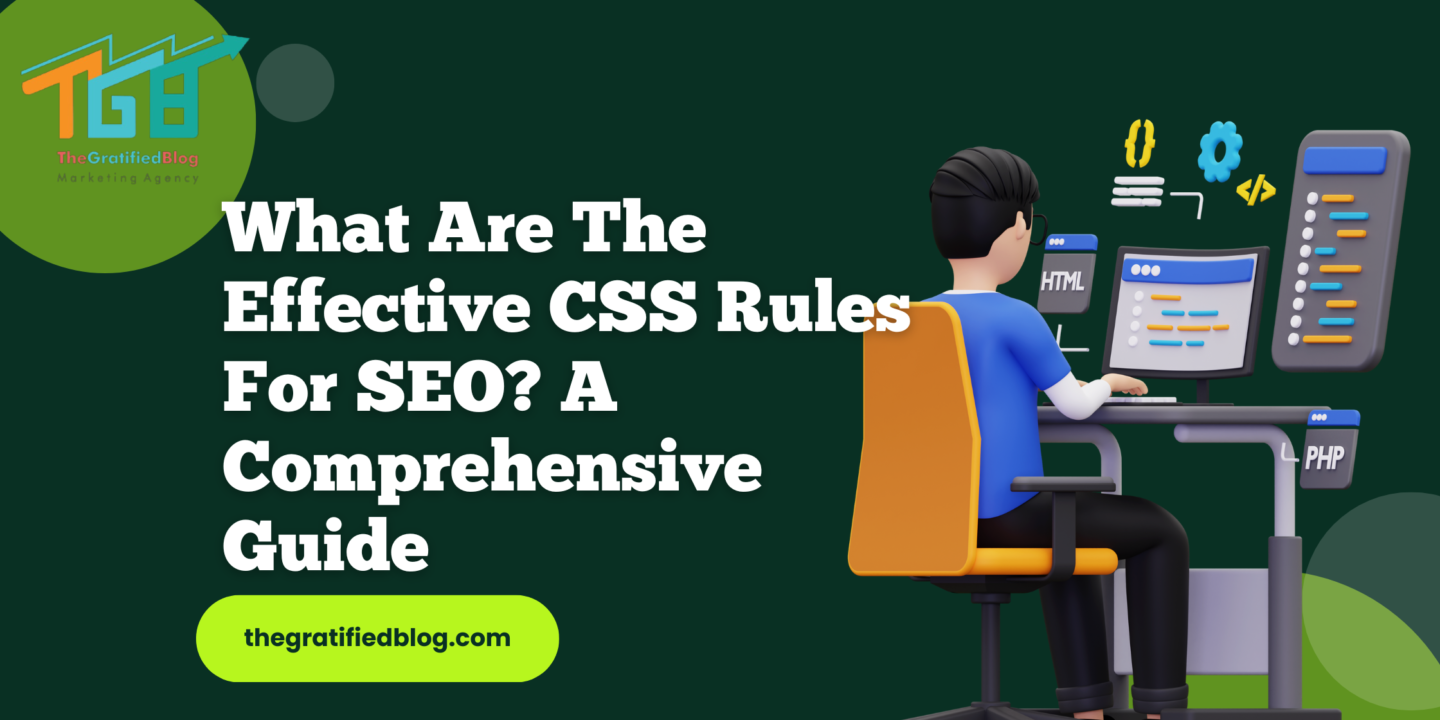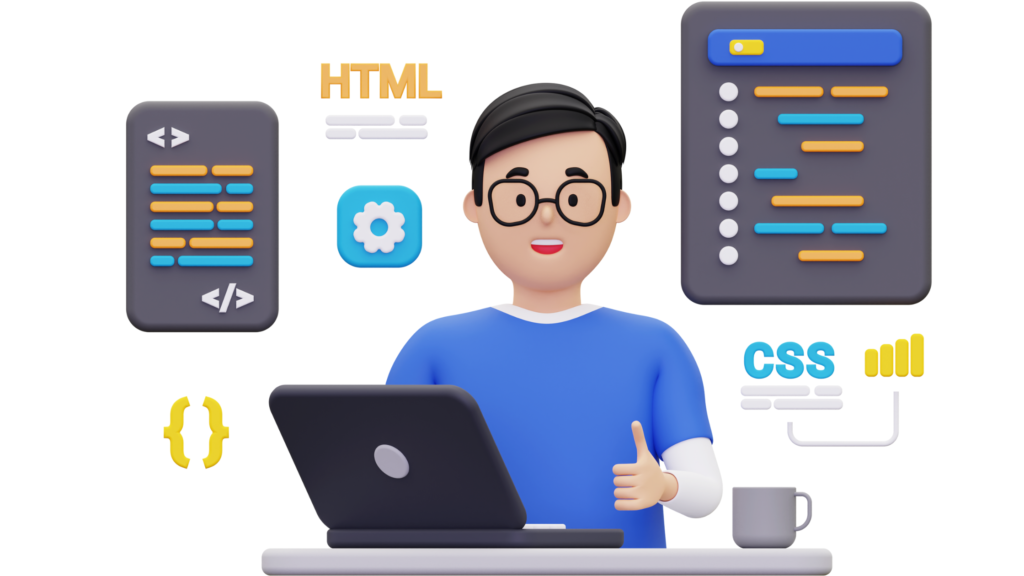
Many wonder, ‘What Are the Effective CSS Rules for SEO?’ Websites grapple with such challenges, striving for improved visibility. However, employing CSS techniques can offer solutions.
Effective CSS rules benefit SEO by allowing for cleaner, more efficient code, which search engines prefer. They also enable responsive design, improving user experience on various devices, a factor search engines consider.
How CSS Plays a Role in SEO
When diving into the digital world, we often encounter the terms CSS and SEO. But how are they connected? Let’s explore this connection and answer the question: What Are The Effective CSS Rules For SEO?
Basics of CSS
- Definition: CSS, or Cascading Style Sheets, gives websites their look and feel. Think of it as the paint and decor of a house. It’s responsible for colors, layouts, and animations.
- Functionality: CSS makes websites user-friendly. Without it, web pages would be just blocks of text with no visual appeal.
- Flexibility: CSS allows web developers to adapt a site’s design for smartphones, tablets, and laptops.
CSS’s Influence on SEO
- Loading Speed:
- Slow-loading websites can lose visitors. CSS can either speed up or slow down a website. Optimized CSS means faster sites and better user experiences.
- The keyword to remember here: What Are The Effective CSS Rules For SEO? One key rule is ensuring your CSS code is efficient to speed up page loading times.
- User Experience (UX):
- A well-structured CSS enhances the user experience. Visitors who enjoy navigating your website will likely stay longer, reducing the bounce rate.
- Sites with lower bounce rates often rank better on search engines. Hence, effective CSS is vital for good SEO.
- Mobile Responsiveness:
- With many people browsing on mobile devices, search engines like Google prioritize mobile-friendly sites.
- CSS ensures that websites look and function well on mobiles. This boosts the site’s SEO rankings.
What do you remember about the role CSS plays in SEO?
It’s crucial to remember that CSS isn’t just about aesthetics. If you’ve ever asked, “What Are The Effective CSS Rules For SEO?” it’s vital to understand that CSS directly affects how search engines perceive your site.
Optimizing your site’s CSS can significantly impact its performance and, by extension, its SEO. Whether through faster loading times or improved user experiences, CSS undeniably influences a website’s search engine ranking.
This discussion will explore 9 CSS practices to enhance SEO, from optimizing file sizes to boosting mobile responsiveness and user experiences.
What Are the Effective CSS Rules for SEO?
Reduce CSS File Size
Reducing CSS file size is a pivotal CSS technique that can significantly enhance website SEO. Large CSS files can lead to slower page loading times, negatively impacting user experience and search engine rankings. To address this, CSS minification and compression are crucial. Minification involves removing unnecessary spaces, line breaks, and comments from CSS code, making it more compact. This streamlined code loads faster, thus improving site speed.
For instance, consider a website with a bloated CSS file of 500 KB. The file size can be reduced to 50 KB or less by effectively minifying and compressing the CSS. This optimization can directly impact SEO, as search engines prioritize faster-loading websites in their rankings. Users also benefit from quicker access to content, leading to better engagement and, potentially, higher conversions.
Prioritize Above-The-Fold Content With CSS
When pondering ‘What Are the Effective CSS Rules for SEO?’, prioritizing above-the-fold content with CSS is a clear answer. Because search engines place a premium on user experience, swift delivery of critical content enhances that experience.
Think about a news website. The vital information users seek is the headlines, featured images, and introductory text. By applying CSS techniques, you can ensure that these elements load first, optimizing your site for SEO.
For instance, employing “async” and “defer” attributes for non-essential scripts allows the browser to initially focus on rendering crucial content. Additionally, using CSS to style above-the-fold elements and avoiding heavy, non-essential styles until later in the document load ensures users get what they came for as swiftly as possible.
Resize Images For Mobile
Imagine a scenario where a user is browsing your website on a smartphone. Without responsive design, images appear too large, causing them to extend beyond the screen’s boundaries, requiring tedious horizontal scrolling or zooming in and out. This frustrating experience can often lead to high bounce rates and negatively impact SEO.
Now, picture the same scenario with responsive CSS in action. CSS media queries detect the screen size as the user accesses your site on their mobile device. Consequently, images are intelligently resized to fit the screen width while maintaining their aspect ratios. This ensures that images are perfectly tailored to the user’s device, delivering a seamless and visually pleasing experience.
Here are six key points to keep in mind for compelling image resizing with CSS:
- Maintain Aspect Ratio
Always use CSS to maintain the aspect ratio of images when resizing. This prevents distortion and ensures images remain visually appealing.
- Use `max-width: 100%’
Applying this CSS rule to images allows them to adapt to the screen width while preventing overflow.
- Auto-Height
Setting the height to “auto” in CSS ensures that the image’s height adjusts proportionally to the width changes, preserving the original image proportions.
- Optimize for Faster Loading
Smaller images for mobile devices also contribute to faster loading times, a crucial factor for user experience and SEO.
- Consider Image Formats
Depending on the content, consider using modern image formats like WebP, which can further enhance performance on supported browsers.
- Test Across Devices
Always test the responsiveness of images across various devices and screen sizes to ensure a consistent and visually appealing experience for all users.
Optimize CSS For Mobile Devices
Mobile optimization has become paramount in the digital era and directly impacts SEO. With most internet traffic from mobile devices, ensuring your CSS caters to mobile users is vital for search engine rankings.
To achieve this, use CSS media queries to create responsive designs. For instance, consider a restaurant website. You can alter your CSS codes to display a condensed menu layout on smaller displays using media queries, making it simpler for users to browse.
@media screen and (max-width: 768px) {
/* CSS for mobile menu */
.menu {
display: none; /* Hide the desktop menu */
}
.mobile-menu {
display: block; /* Show the mobile menu */
}
}
This enhances user experience and helps search engines recognize your site as mobile-friendly, potentially boosting your rankings in mobile search results.
Additionally, CSS can be leveraged to ensure images scale appropriately on mobile devices, preventing issues like content cutoff or excessive scrolling.
.img-responsive {
max-width: 100%;
height: auto;
}
Utilize Semantic HTML and CSS
Answering the question, ‘What Are the Effective CSS Rules for SEO?’ involves harnessing the power of semantic HTML and CSS. Semantic HTML elements provide a clear structure to your content, allowing search engines to better understand your page’s context. Combine this with CSS for enhanced presentation and a winning SEO strategy.
Semantic HTML tags like <header>, <nav>, <article>, and <footer> convey the meaning of specific page sections, helping search engines recognize the importance of content within these tags. Pair these tags with CSS for styling, ensuring not only a visually appealing design but also an SEO-friendly one.
For example, you use <article> tags to encapsulate the content when structuring an article. Then, apply CSS styles to define the article’s font size, spacing, and color scheme. This approach improves readability and signals to search engines that this content is essential, potentially boosting your rankings.

Enhancing Image SEO With CSS
If you’re asking ‘What Are the Effective CSS Rules for SEO?’, optimizing images for SEO should be high on your list. In your HTML code, you can use CSS techniques to define image dimensions (width and height). When search engines crawl your site, correctly sized images reduce page rendering time, positively affecting SEO rankings.
Additionally, CSS can help with image accessibility. Using the “alt” attribute for image tags is an SEO best practice. However, visually hiding it while making it accessible to screen readers can be achieved with CSS. For instance:
.image {
width: 300px;
height: 200px;
overflow: hidden;
text-indent: -9999px; /* Hides text from view but remains accessible */
}
Moreover, CSS sprites combine multiple images into one, reducing HTTP requests and improving load times. This enhances user experience and positively influences SEO by decreasing bounce rates and improving ranking factors related to site speed.
CSS For Breadcrumb In SEO
Part of understanding ‘What Are the Effective CSS Rules for SEO?’ is recognizing the role of CSS for breadcrumb navigation in web design. It offers both functionality and aesthetics to enhance user experience and SEO. Breadcrumbs help users navigate a site efficiently and understand its structure, which can reduce bounce rates and improve search engine rankings.
To style breadcrumb navigation effectively, you can use CSS to:
- Customize Appearance
Tailor the fonts, colors, and spacing to match your site’s design while ensuring readability.
- Separators
Define stylish separators (e.g., arrows, slashes) to distinguish between breadcrumb elements.
- Hover Effects
Implement subtle hover effects, like color changes or underlines, to indicate interactivity.
- Responsive Design
Ensure that breadcrumbs adapt to different screen sizes, using media queries to prevent overcrowding on smaller screens.
Here’s a minimal example:
.breadcrumb {
font-family: Arial, sans-serif;
font-size: 16px;
color: #333;
}
.breadcrumb a {
text-decoration: none;
color: #0070c9;
}
.breadcrumb a: hover {
text-decoration: underline;
}
.breadcrumb .separator::before {
content: ” › “;
color: #666;
margin: 0 5px;
}
@media screen and (max-width: 768px) {
.breadcrumb {
font-size 14px;
}
}
Enhancing Structured Data With CSS
Structured data is like adding labels to help search engines understand your content, such as ratings or event details. This is where CSS acts like a stylist.
You can alter the fonts, colors, and layouts to make these labels more aesthetically pleasing. People are more likely to click on your snippets when they appear beautiful, which can boost your search engine rankings.
Takeaway
Effective SEO is necessary to supercharge your SEO game and empower your website to gain enough traction to drive more organic traffic and better search engine rankings.
By optimizing CSS file size, prioritizing above-the-fold content, and embracing mobile-friendly design, you can enhance your site’s ranking potential.
Additionally, leveraging semantic HTML and CSS, improving image SEO, and fine-tuning internal links will boost your online visibility. Ensuring crawlability, avoiding duplicate content, and enhancing user experience through CSS are vital aspects of a holistic SEO strategy.








No Comments